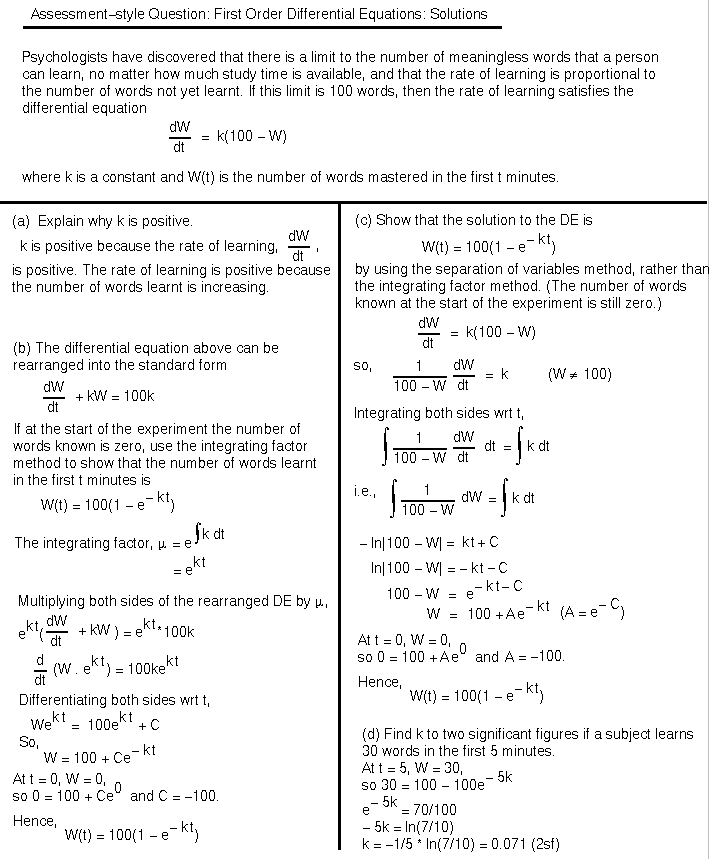Application Of First Order Differential Equation

I f e int50dt e 50t so after substituting into the formula we have.
Application of first order differential equation. We ll need to apply the formula for solving a first order de see linear des of order 1 which for these variables will be. Pdf applications of first order differential equations jays dejaresco academia edu growth and decay problems let n t denote ihe amount of substance or population that is either grow ing or deca ing. Use of first order differential equation and these solution are very useful in mathematics biology and physics especially in analyzing problems involving tem perature. Applications of first order di erential equation orthogonal trajectories how to find orthogonal trajectories to nd the orthogonal trajectories of the family f x y c 0.
Dy dx f x y of two variables x and y with its function f x y defined on a region in the xy plane. We assume that dn dt. The lime rale of change of this amount of substance is proportional to the amount of substance. It has only the first derivative dy dx so that the equation is of the first order and no higher order derivatives exist.
This is a first order linear differential equation. 2 2 2 h t d d g dt dh t 3 13 equation 3 13 is the 1st order differential equation for the draining of a water tank. 3 step1 di erentiate 3 implicitly with respect to x to get a relation of the form 3 g x y. We find the integrating factor.
Exponential growth population let p t be a quantity that increases with time t and the rate of increase is proportional to the same quantity p as follows d p d t k p where d p d t is the first derivative of p k 0 and t is the time. The differential equation in first order can also be written as. One of the common applications of differential equations is growth and decay. Equation d expressed in the differential rather than difference form as follows.
Once the parachute opens the equation of motion is where b k m. With an initial condition of h 0 h o the solution of equation 3 13 can be done by separating the function h t and the. The solution to the above first order differential equation is given by p t a e k t. 4 step2 eliminate the parameter c from 3 and 4 to obtain the.
A first order differential equation is defined by an equation.

















